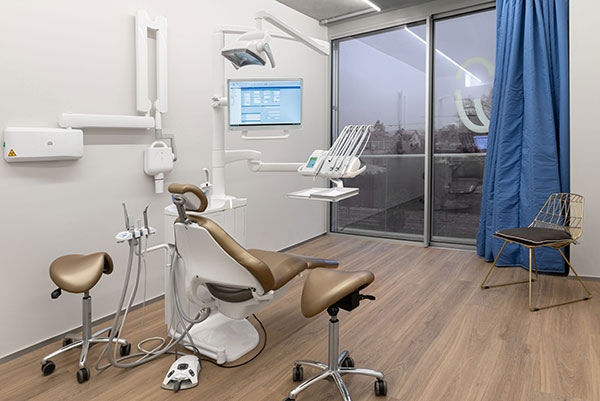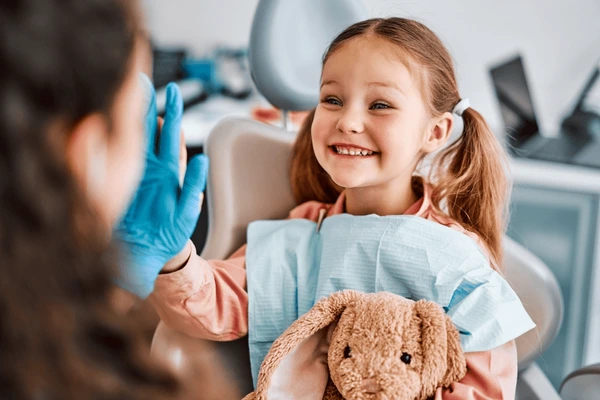
Patient comfort at the dentist
Recent advances
Visiting a dentist has long been a source of stress andanxiety for many people. However, significant advances have been made to improve patient comfort during these vital visits. Let's take a look at recent advances that make the experience at the dentist's office more pleasant and less frightening.
The impact of reception on patients
From the moment you enter the dental surgery, the welcome you receive plays an essential role. A welcoming environment can considerably reduce nervousness. Modern dental practices focus on creating a warm, soothing atmosphere.
To achieve this, many dentists redesign their waiting rooms with soft colors, relaxing decor and sometimes even essential oil diffusers. Everything is designed to create a feeling of well-being and satisfaction right from the start.
Managing anxiety and stress
Managing patients' anxiety is crucial. To achieve this, a number of relaxation techniques are used. The aim is to help patients relax before and during treatment.
In addition, some clinics offer guided relaxation sessions or use soft music to calm the mind. These methods help to significantly reduce stress levels.
Technological advances in pain-free care
One of the most dreaded aspects of going to the dentist is the potential pain associated with dental treatment. Fortunately, technological innovations have made many procedures virtually painless.
The use of dental technology such as digital impressions, for example, reduces the discomfort often associated with traditional impressions. This type of technology not only saves time, but also enhances patient comfort.
Modern anesthesia and sedation
Advances in local anaesthetics and sedation techniques have been revolutionary. Today, it is possible to deliver rapid, effective anesthesia, minimizing the sensation of pain.
In addition, conscious sedation enables the patient to remain awake while in a deeply relaxed state. This helps to ensure that even particularly anxiety-provoking procedures can be carried out without undue stress.
Ergonomics and posture during care
Patient posture during dental treatment is another key factor in comfort. Poor posture can lead to additional pain, making the experience even more unpleasant.
That's why modern dental chairs are designed for optimum support. They are ergonomic and adjustable, enabling the dentist to work efficiently while ensuring patient comfort.
Relieve sensitive areas
Some patients experience discomfort in sensitive areas of their mouth. In these cases, special equipment such as dental dams are used to protect and isolate the teeth during treatment.
These devices keep the surgical area dry and clean, reducing discomfort and promoting more precise, safer care.
Reassuring communication and explanations
Communication between dentist and patient is vital. Knowing what to expect can turn a frightening situation into a bearable, even positive experience.
Simple, reassuring explanations about the planned procedure, possible sensations and the measures taken to ensure patient comfort can go a long way towards easing anxiety. Open dialogue increases patient confidence and cooperation.
Personalized care
Every patient is different, and personalized care makes a big difference. It's essential that the dentist tailors his or her approach to the patient's specific needs.
Whether addressing specific phobias, allergies or personal preferences, this attention to detail fosters a sense of security and mutual respect.


Integrating alternative wellness techniques
While some patients prefer to avoid conventional approaches, alternative techniques are also available. Methods such as therapeutic hypnosis are becoming increasingly popular for managing fear and pain.
These practices, combined with good communication and a soothing environment, form a harmonious set of strategies designed to maximize patient comfort at the dentist's office.
The role of continuing professional development
Dentists are increasingly well trained to manage not only the technical aspects of their profession, but also the human aspects of patient comfort. This has become an integral part of their continuing education.
Thanks to training programs focusing on patient psychology and new technologies, they are better equipped to personalize care and reduce the typical fears experienced during dental consultations.
Constant updating of knowledge
Medicine is evolving rapidly, and dentists must constantly update their knowledge to offer the best possible service. Knowing the latest anesthesia products, learning about new relaxation techniques, and mastering emerging technologies are all part of this process.
This constant renewal ensures that every patient benefits from the latest practices in dental comfort and efficiency.
Other promising innovations
Technological gadgets such as in-ear cleaning devices, designed to gently and effectively clean the ears without causing discomfort, are gaining in popularity. These little innovations show how technology is becoming a valuable ally in patient comfort.
Adopting these high-tech solutions doesn't just mean following a trend; it truly transforms the medical approach and significantly improves the experience each patient has at the dentist.
Patient comfort at the dentist's at Centre Dentaire Chêne-Bourg
The Centre Dentaire de Chêne-Bourg focuses on patient comfort, offering a soothing atmosphere and modern equipment to minimize pain and stress during treatment.
Practitioners use advanced techniques and gentle approaches to ensure a more pleasant experience, even during more complex treatments.
For anxious patients, the center often offers options such as conscious sedation, which allows patients to remain relaxed while conscious during procedures.
The Centre Dentaire de Chêne-Bourg often understands the importance of making the experience at the dentist's a positive one for children, and so offers a child-friendly waiting room. It's usually furnished with games, books and sometimes even interactive screens to distract and soothe young patients before their consultation. This helps reduce children's anxiety by creating a more welcoming, playful environment.
Discover also the Centre Dentaire Lancy and the Centre Dentaire Champel





